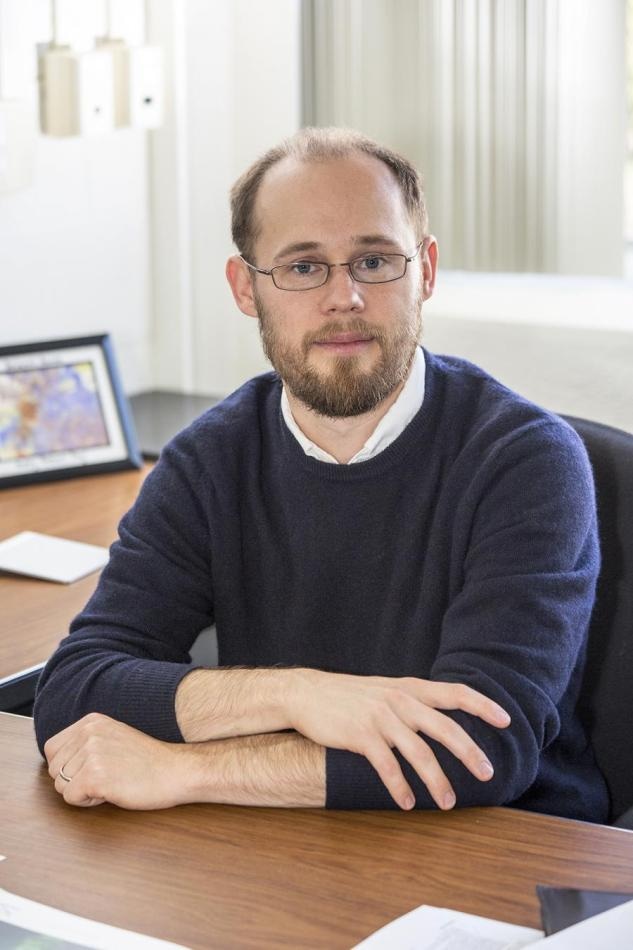Nov 13 2017
Researchers have discovered that plasma-generating lasers can offer in-depth knowledge of the bursts of subatomic particles taking place in deep space. The discovery can assist researchers in understanding solar flares, cosmic rays, and solar eruptions, which are emissions from the sun with the ability to disrupt cell phone services and dismantle power grids around the world.
 PPPL physicist Will Fox. CREDIT: Photo by Elle Starkman.
PPPL physicist Will Fox. CREDIT: Photo by Elle Starkman.
For a long time physicists have noted that particles such as atomic nuclei and electrons can achieve exceptionally higher speeds in space. Scientists are of the opinion that this might be due to processes linked to plasma—the fourth state of matter which is hot and in which electrons stand separate from atomic nuclei. Certain models propose that the increase in speed may be caused due to magnetic reconnection—occurring when the magnetic field lines in plasma get disconnected and are reconnected again, thereby releasing enormous amounts of energy.
To solve this problem, a research team of headed by Will Fox, physicist at the U.S. Department of Energy’s (DOE) Princeton Plasma Physics Laboratory (PPPL), employed lasers to make conditions similar to astrophysical behavior. The laboratory process allows the investigation of outer-space-like plasma in a reproducible and controlled ambience. “We want to reproduce the process in miniature to conduct these tests,” stated Fox, lead author of the study reported in the Physics of Plasmas journal.
The team adopted a simulation program known as Plasma Simulation Code (PSC) with the ability to trace plasma particles in a virtual medium in which they interact with simulated electric and magnetic fields. The origin of the code was Germany and its was further advanced by Fox and his team at the University of New Hampshire before Fox joined PPPL. Researchers performed the simulations on the Titan supercomputer at the Oak Ridge Leadership Computing Facility, a DOE Office of Science User Facility, at Oak Ridge National Laboratory, through the DOE’s Innovative and Novel Computational Impact on Theory and Experiment (INCITE) program.
The simulations add to the investigations by Fox and other researchers showing that laser-generated plasmas can assist in investigating the acceleration processes. During the new simulations, the plasmas were observed to bubble outward and collide with one other, setting off magnetic reconnection. The simulations also propose two types of processes that convey energy generated due to the reconnection to particles.
As part of one process, or the Fermi acceleration, particles acquire energy when they bounce to and fro between the outer edges of two converging plasma bubbles. In the other process—the X-line acceleration—the transfer of energy to particles occurs when they interact with the electric fields generated as part of the reconnection.
Fox and his colleagues intend to carry out physical experiments that reproduce the conditions in the simulations by adopting the OMEGA laser facility at the University of Rochester’s Laboratory for Laser Energetics as well as the National Ignition Facility at the DOE’s Lawrence Livermore National Laboratory.
We’re trying to see if we can get particle acceleration and observe the energized particles experimentally.
Will Fox, physicist at the U.S. Department of Energy’s (DOE) Princeton Plasma Physics Laboratory (PPPL)
Partnering with Fox on the study published in Physics of Plasmas were physicists from PPPL, Princeton University, and the University of Michigan. The DOE’s Office of Science (Fusion Energy Sciences and the National Nuclear Security Administration) funded the study.
PPPL located on Princeton University’s Forrestal Campus in Plainsboro, New Jersey, is dedicated to develop in-depth understanding of the physics behind plasmas (which are ultra-hot, charged gases) and to create practical solutions for generating fusion energy. The University manages the laboratory for the U.S. Department of Energy’s Office of Science—the biggest single supporter of basic studies in the physical sciences in the United States—where the laboratory endeavors to overcome certain crucial challenges.